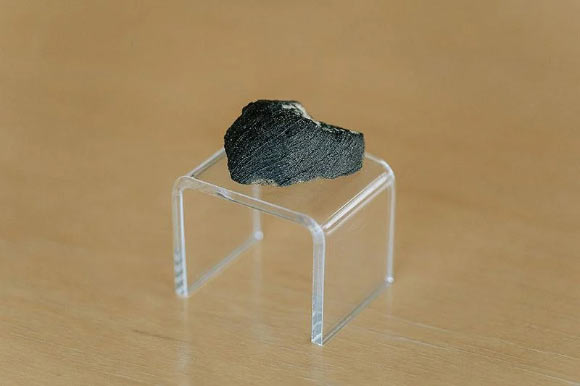An asteroid struck Mars 11 million years ago and sent pieces of the planet hurtling through space; one of these chunks eventually crashed into the Earth. During early investigations of this object, named Lafayette meteorite, scientists discovered that it had interacted with liquid water while on Mars. Now, researchers from the United States and the United Kingdom have determined the age of the minerals in the meteorite that formed when there was liquid water.
Meteorites are solid time capsules from planets and celestial bodies from our Universe.
They carry with them bits of data that can be unlocked by geochronologists.
They set themselves apart from rocks that may be found on Earth by a crust that forms from its descent through our atmosphere and often form a fiery entrance visible in the night’s sky.
“We can identify meteorites by studying what minerals are present in them and the relationships between these minerals inside the meteorite,” said Dr. Marissa Tremblay, a researcher at Purdue University.
“Meteorites are often denser than Earth rocks, contain metal, and are magnetic.”
“We can also look for things like a fusion crust that forms during entry into Earth’s atmosphere.”
“Finally, we can use the chemistry of meteorites (specifically their oxygen isotope composition) to fingerprint which planetary body they came from or which type of meteorite it belongs to.”
According to the authors, some Martian meteorites, such as a 0.8-kg nakhlite meteorite called the Lafayette meteorite, contain minerals that formed through interaction with liquid water while still on Mars.
“Dating these minerals can therefore tell us when there was liquid water at or near the surface of Mars in the planet’s geologic past,” Dr. Tremblay said.
“We dated these minerals in the Martian meteorite Lafayette and found that they formed 742 million years ago.”
“We do not think there was abundant liquid water on the surface of Mars at this time.”
“Instead,…
Read the full article here







